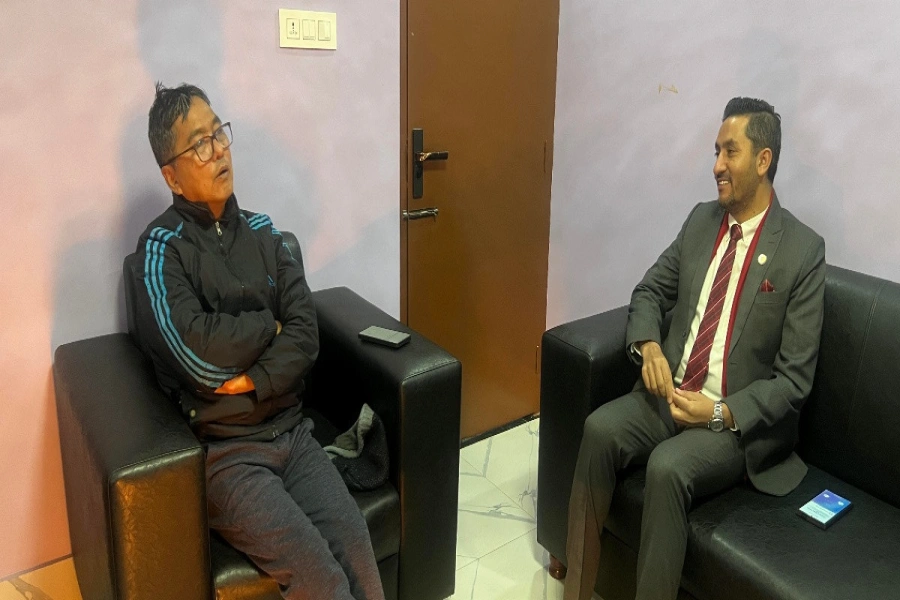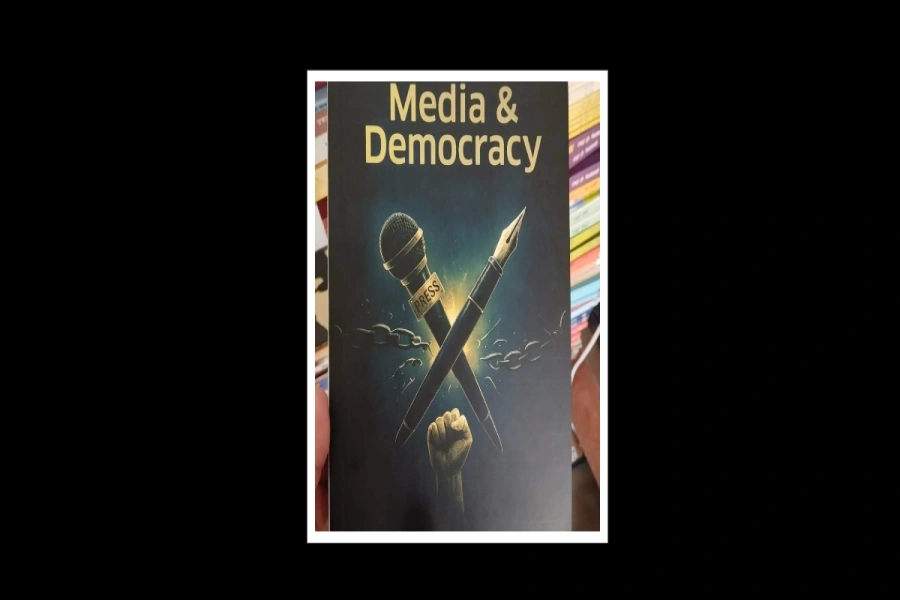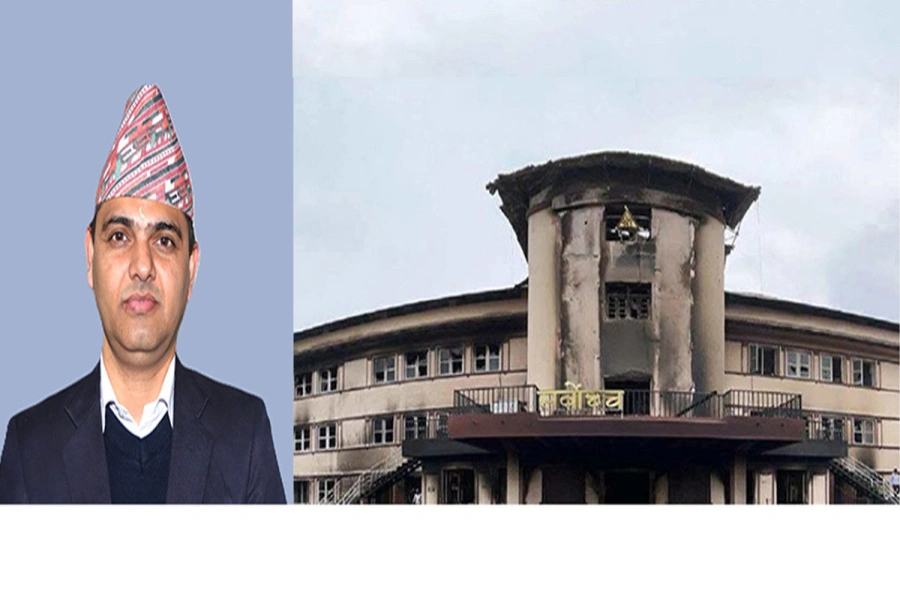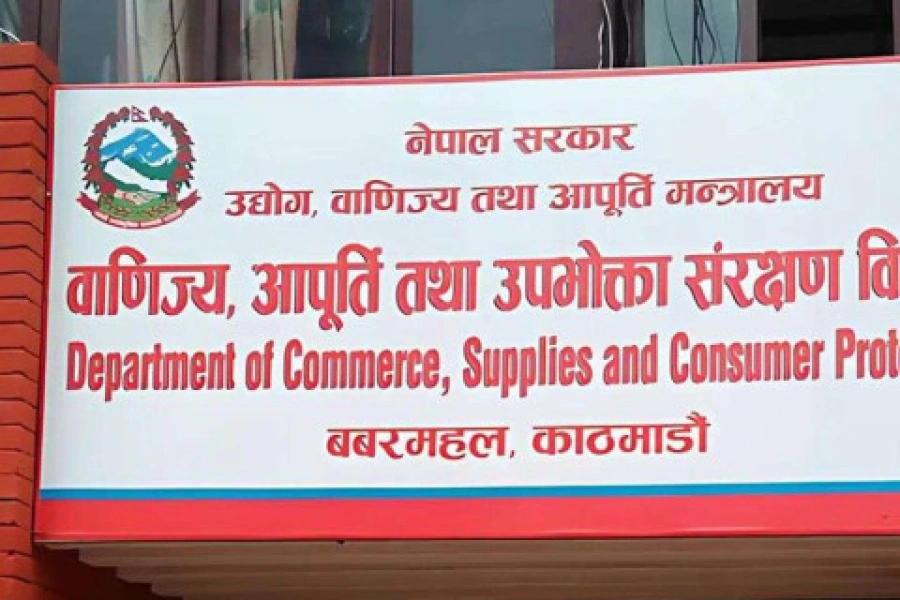Durga Nath Sharma is a celebrated media personality of the country for having initiated and marked a revolutionary phase in the Nepali broadcast media. Sharma is a veteran media personality to bring Nepal Television to life as he worked at the channel as a General Manager for five years. Originally from Illam, his career in media developed after gaining expertise as a reporter and assistant editor at Gorkhapatra newspaper.
Popular for his show ‘Bishwa Ghatana’ at Nepal Television that earned him numerous accolades from the Nepali public, Sharma has also penned books and other literary works such as ‘Bina Rahadhaniko Bideshyatra’, ‘Barsa Aamsanchar Ma’, and ‘Handbook on Broadcasting Journalism’. Following his retirement in 2061 BS, he has been teaching Broadcasting Journalism at the Golden Gate International College, Battisputali, and has published over 1,000 articles in various newspapers of Nepal and Southeast Asia.
My City’s Sonam Lama caught up with Sharma to reminisce his four-decade journey in various facets of media.
Taking investigative journalism to new heights

How did NTV pave a way to invite revolution in the Nepali media?
The idea of television was completely alien when Late King Birendra Bir Bikram Shah proposed to set up a national television back then. The definition of televising was a matter of both disbelief and hope. Since Nepal was on the phase of anticipating a major breakthrough in national media, there was an acute lack of manpower and technical equipment. As only a few of us were working to launch NTV, we had to deal with several complications that came our way. I had to quit Gorkhapatra and put everything at stake to devote my time for this project however, we surfed against all the odds and eventually introduced the channel.
In your view, how has media changed over the decades?
The definition of media has witnessed many phases of improvements and lethargy. When we first started, although press freedom was slightly curtailed, the news content was not compromised. With the introduction of TV programs in Nepal in 1984, press freedom was improvised as the channel began televising various satirical and informative shows. Since national media was controlled by the government, the idea of advertising was not in practice as it is now. The media today are highly commercialized and are growing into a lucrative market, which in many ways has impeded the news content. However, the strength of this phase is that we have an easy access to advanced technology but only its proper and smarter use can take media to the next level of development.
Having experienced several facets of media, which area did you enjoy the most?
Working in print and broadcast media has its own set of working mechanisms. When I reminisce over my four decades of experience in media, I only come across the differences in the process of making news. The underlying aspects of media is highly intertwined whether it is print or broadcast. I was quite a social and outspoken person, and rather than dissecting the forms of media, I always found myself keen and attached to the sole idea of media which was to aware, educate and influence people with research based content.
How have your priorities shifted after retiring from work?
My priorities have changed in terms of the works that I dedicate myself to now. The 10-5 job before retirement was different from the hours that I spend now. As a grandfather, I have the responsibility of spending quality time with my granddaughter. It’s been five years that I started teaching Broadcast Journalism to the BA Journalism students at Golden Gate International College. The skills that I gained in all these decades are compiled in many of my books, articles and literary works. I believe expressing; compiling and publishing my experience will definitely guide, and serve as a source of information in the long-run.
What measures do you think should be adopted to uplift Nepali media?
The first and foremost thing that should be focused upon is maintaining the quality of news via research based information. Many online media platforms are mushrooming these days, but their quality and credibility cannot be vouched for. It is not the quantity but the quality of news that determines the proficiency and professionalism of a media house. Prior to publishing any work, you need to check and evaluate the content. Moreover, media ethics, rules and regulations should properly be implemented to let Nepali media prosper.




































